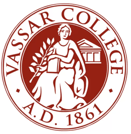Chapter 3, Part 1 — Applying AI to Education
Most current thinking about AI in education stays inside today’s system—this section challenges those assumptions and maps out where disruption may begin.


Chapter 3, Part 1 — Applying AI to Education
Introduction & Boundary Work
Unsurprisingly, the majority of the current literature on how AI will affect the future of education builds off our current institutions, without stepping outside our current conceptions of what education looks like today and without taking into account the broader trajectory of how AI could even change the world as we know it.
For example, a significant concern in education is the advanced capabilities of AI programs like ChatGPT, which threaten to supplant the effort and cognitive processes students need for problem-solving (Dergaa et al., 2024). These AI chatbots excel in various tasks, from writing articles to answering complex questions, translating languages, solving scientific and mathematical problems, generating code, and summarizing books (İpek et al., 2023). As a result of its success, these AI tools have undergone testing in various fields, including law, pharmacy, medicine, and language education, where they have consistently outperformed the average student (İpek et al., 2023). This high level of effectiveness is raising alarms among educators about the impact of AI on educational processes and the tendency for students to pass off AI-generated content as their own work (İpek et al., 2023).
To better understand the boundaries of the majority of scholarly work around this topic, an expanded view of Thomas F. Gieryn’s idea of “boundary-work” is relevant. This concept of boundary work was originally used to explore the demarcation of what was considered a science and what was considered a non-science; however, it also helps to identify where and how boundaries are created in existing institutions such as education to strategically reorganize old boundaries into new ones that benefit our society (Gieryn, 1983).
Because the future of AI is unknown, Gieryn’s “boundary-work” framework can serve as an important tool to identify artificial boundaries of our thinking created by society and help us envision new boundaries to model and plan for a very different future with AI. This is important because it is only through identifying these boundaries that we can be unencumbered in our thinking and solution-seeking.
In this chapter, I address the future of education through the lens of AI’s potential effects. I consider how AI could update, even streamline, or totally disrupt current education processes within the boundaries of our existing educational system. Finally, I examine how AI will likely have a profound impact on education—both positive and negative—within the current boundaries of our existing educational system.
Current Educational System & Boundaries Defined
The U.S. Department of Education breaks down the “boundaries” of the current educational system into three distinct but highly interconnected activities: teaching, learning, and assessment, which I will refer to as the “Education Triad” (U.S. Department of Education, 2023). Each one of these activities is likely to be disrupted by the inevitable introduction of AI, a trend that is already happening.
While AI is anticipated to see significant growth in the education sector, potentially increasing more than tenfold over the next eight years, it faces challenges from well-established educational systems that are often resistant to change (Nagel, 2023). Key questions our society will need to address include: how will all this play out under existing boundaries? How will AI force change within these systems, and how can we manage this for the benefit of students, teachers, and society as a whole?
Why This Matters: Technology and Society Do Not Exist in a Vacuum
Technological advancements and societal norms do not exist in a vacuum but are interdependent. In her seminal book States of Knowledge, Jasanoff (2010) asserts that “the ways in which we know and represent the world (both nature and society) are inseparable from the ways in which we choose to live in it” (p. 2). This perspective drives us to explore education and technology as a two-way street—exploring both how educational practices shape technological development and, conversely, how technology will affect educational methods. AI will therefore likely reshape teaching, learning, and assessment, and in turn, influence at least part of the evolution of AI itself. As students increasingly raised with integrated AI enter the field, they could become key drivers of its future progress.
References
Dergaa, I., Ben Saad, H., Glenn, J. M., Amamou, B., Ben Aissa, M., Guelmami, N., Fekih-Romdhane, F., & Chamari, K. (2024). From tools to threats: A reflection on the impact of artificial-intelligence chatbots on cognitive health. Frontiers in Psychology. https://www.ncbi.nlm.nih.gov/pmc/articles/PMC11020077/
Gieryn, T. F. (1983). Boundary-work and the demarcation of science from non-science: Strains and interests in professional ideologies of scientists. American Sociological Review, 48(6), 781–795. https://doi.org/10.2307/2095325
İpek, Z. H., Gözüm, A. İ., Papadakis, S., & Kallogiannakis, M. (2023). Educational applications of the ChatGPT AI system: A systematic review research. Educational Process: International Journal, 12(3), 100–116. https://doi.org/10.22521/edupij.2023.123.2
Jasanoff, S. (2010). States of knowledge: The co-production of science and social order. Routledge.
Nagel, D. (2023, January 12). AI to experience massive growth in education. THE Journal. https://thejournal.com/articles/2023/01/12/ai-to-experience-massive-growth-in-education.aspx
U.S. Department of Education. (2023). Artificial intelligence and the future of teaching and learning: Insights and recommendations. Office of Educational Technology. https://tech.ed.gov/ai/